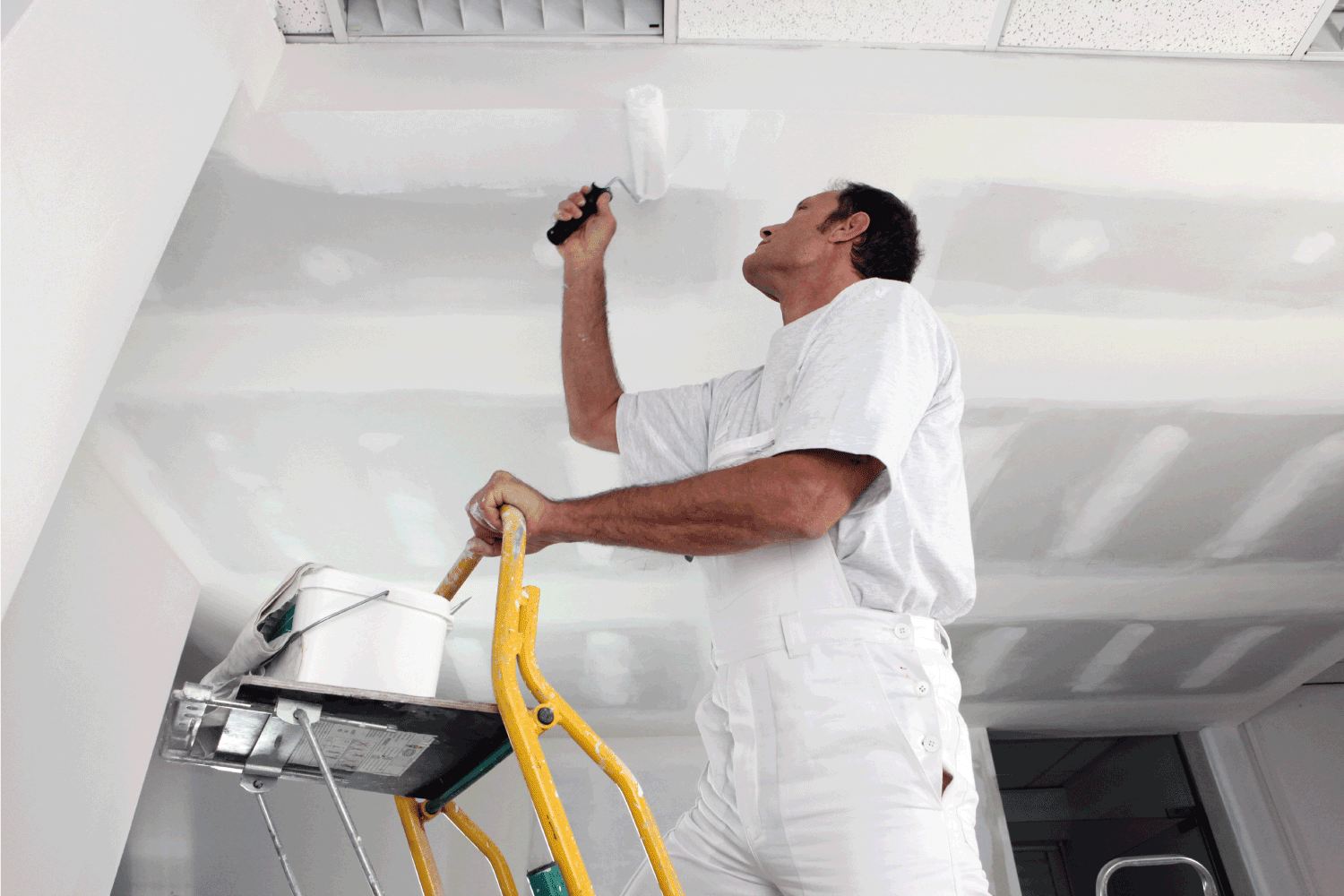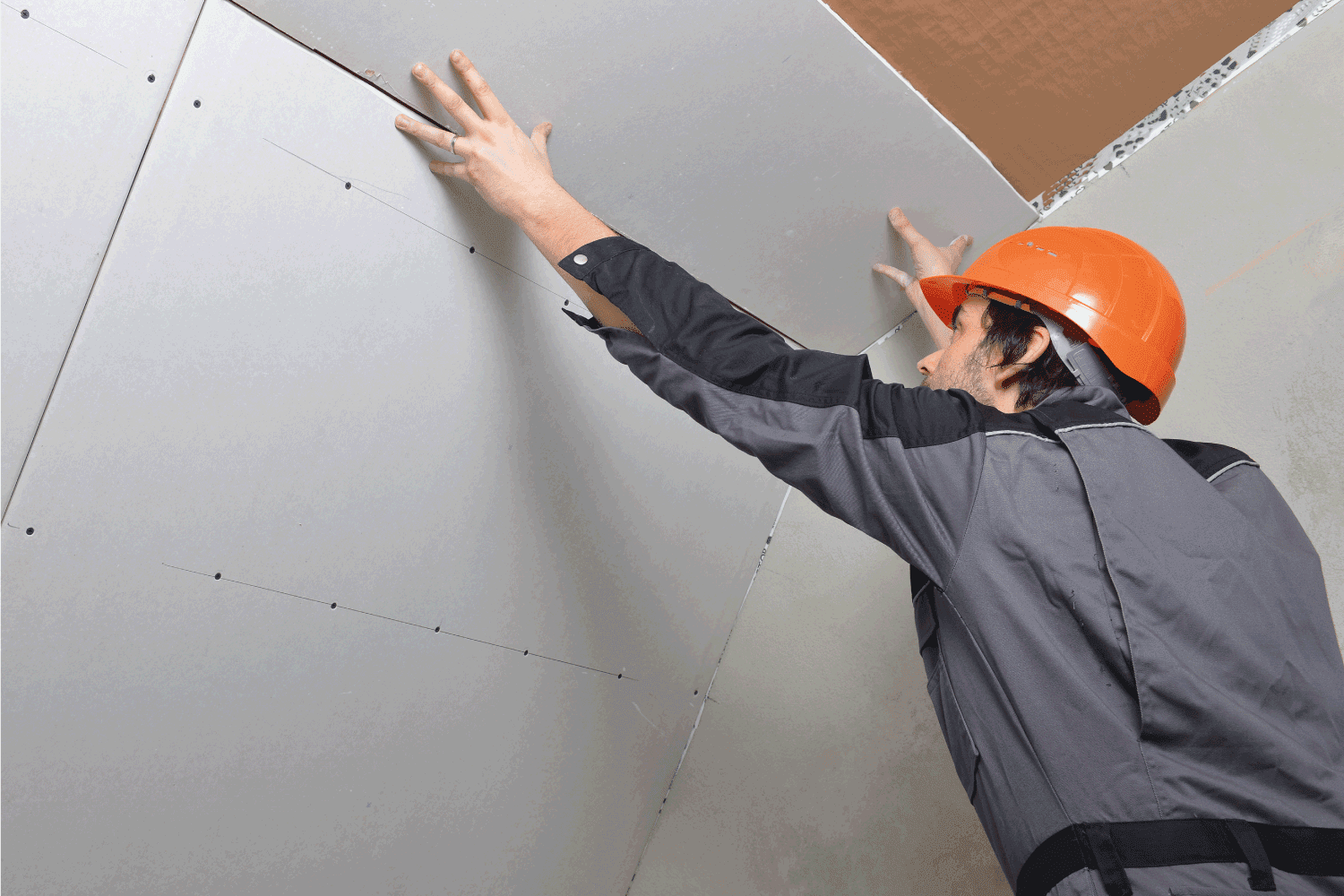Drywall is the current standard for interior wall cladding in the United States and elsewhere. However, this material is expensive and difficult to install. So, as an added feature, you might be wondering if drywall adds R-value and helps insulate. In this post, we answer your question using industry professional knowledge and up-to-date research.
Yes, drywall does add R-value and does help insulate. This is because any material resists the flow of heat from one side to the other. That being said, drywall is not a particularly efficient insulative material. Drywall only adds from around R-0.5 to R-0.6 to the entire wall assembly.
Keep reading the rest of this post to learn more about the insulative property of drywall and other alternative wall cladding. We also cover many of the other advantages that drywall confers to come construction. To conclude, we answer a few related questions.

R-Value of Drywall
R-value stands for how resistant a material is to the transfer of heat. For instance, the common insulation of fiberglass batts has an R-value of between 2.9 and 3.5 per inch of material. Drywall, on the other hand, only has an R-value of approximately R-1 per inch.
Click here for small, shippable drywall panels from Amazon.
Further, drywall commonly comes in two thicknesses 1/2-inch and 5/8-inch. Therefore, a 1/2-inch thick sheet of drywall has an R-value of about 0.5, and a 5/8-inch thick sheet of drywall has an R-value of around 0.6.
The low R-value provided by drywall is relatively negligible compared to the R-15 to R-23 of most wall assemblies. However, drywall does confer many advantages to home, some of which actually help insulate your home outside of R-value alone.
Does drywall make a room warmer?
Yes, drywall does make a room warmer. In addition to the small amount of insulation that drywall confers, properly installed drywall prevents air from moving through a wall assembly.
Further, drywall makes an excellent support structure to hold up more insulative components in place. That is to say, the stiff nature of drywall does a good job of holding up fiberglass batts, blown-in cellulose, or even blown-in foam.
Is drywall a good air barrier?
According to this information sheet from the United States Department of Energy, drywall (also known as gypsum wallboard) makes an excellent air barrier. However, to achieve maximum air resistance, the drywall must be properly installed.
This installation involves taping and mudding seams and caulking edges of drywall sheets. If done correctly, the drywall will stop almost all air from moving from one side to the other.
To facilitate a home's comfort and temperature consistency, stopping airflow is just as important as having insulation. Most insulation materials, such as fiberglass and cellulose, are very poor air barriers, so they need effective air barriers, such as drywall, as companion building materials.
What is the difference between insulation and an air barrier?
Since insulation and air barriers are essential to in-home comfort, it is easy to confuse the two factors.

Insulation, like fiberglass or cellulose, is resistant to the conductive transfer of heat. A good example of heat conduction is how heat moves from a hot stove to your hand if you were to touch the stove surface. Conduction is the transfer of temperature directly from one molecule to another.
On the other hand, an air barrier is resistant to a different type of heat transfer known as convection. For example, that same stove will also heat the air around the heating element. This temperature change is something you can feel with your hand. Convective heat transfer is temperature transfer through a liquid or gas such as air or water.
Since both of these types of heat transfer are relatively efficient ways to move heat, we build our homes to combat both convection and conduction. The drywall and siding stop convective heat transfer in the standard wall design, and the fiberglass batt insulation prevents conductive heat transfer.
Some types of insulation, such as foam board, function to stop both conductive and convective heat transfer. However, this product is also much more expensive than fiberglass or cellulose.
Can you drywall without insulation?
Yes, you can. However, for exterior walls, skipping the insulation step is highly inadvisable.
Historically, it was once very common to put wall cladding over walls that held no insulation. Further, the drywall itself is only attached to the framing elements and does not require insulation. Drywalled walls will look the same with or without insulation on the outside.
However, the nation has spent decades performing the difficult task of insulating walls with interior wall cladding installed. This is because insulation saves you money and energy through a reduction in both heating and cooling needs.
Through time we have found that the investment of insulation pays off in energy cost saving over the life of the insulation and home. Generally, you can expect insulation to last as long or longer than the life of your home.
Most common home insulations are expected to last over 100 years. And, according to the Environmental Protection Agency, insulation saves about 15% of the cost of home heating.
Therefore, if you have $600 in yearly heating costs, insulation should save you $9,000 over the lifetime of the insulation. If you have a larger home or higher heating costs, the savings would be even more considerable!
Finally, it is the building code in many places to have insulation on all exterior surfaces of new and significant remodel construction. Be sure to take a look at the local code before you make major home remodeling decisions.
Is drywall or wood better insulation?
According to online sources, plywood is marginally better at insulating than drywall. It seems that a similar thickness of plywood is about 20% more insulative than drywall. However, this means that a 1/2-inch sheet of plywood has an R-value of 0.6 compared to a 1/2-inch sheet of drywall at R-0.5.
This minor difference in insulation accounts for almost nothing in the grand scheme of high-end modern insulation levels.
Is drywall fire-resistant?
One of the major advantages that drywall has over wood wall covering is its fire-resistant capabilities. While drywall will burn eventually, it takes much more heat and flames than plywood. This is one of the main reasons that drywall is such a popular wall covering.
Different drywall thicknesses have different fire-resistant capabilities. 1/2-inch drywall is rated to resist fire for 30-minutes, while 5/8-inch drywall is rater to resist fire for twice as long as 1 hour.
Does moisture pass through drywall?
Yes, moisture most certainly does pass through the drywall. Drywall absorbs a certain amount of water which is always retained in its structure. This is part of the reason drywall is relatively fire-resistant.
Drywall is so permeable to moisture that water will slowly move from the wetter side of the drywall to the dryer side. This is actually a feature. For instance, if water somehow leaked into your wall or ceiling assembly, that moisture would be able to evaporate through the drywall slowly.
If moisture cannot escape from behind walls cladding, it might eventually lead to rot, pest, and other issues.
Is drywall soundproof?
Unfortunately, drywall is not totally soundproof. However, compared to wood paneling or lathe and plaster, drywall is very effective at deadening the movement of sound through a home. The mineral structure of this material helps stop sound and reduce volume.
What is drywall made of?
Drywall is made of two sheets of paper that sandwich a hardened plaster known as gypsum. Gypsum is a naturally occurring mineral composed of calcium and sulfur. This mineral is ground into powder and reconstituted to make drywall.

Generally, drywall is harmless to humans. However, if you plan to do any drywall demolition - it is wise to wear eye and breathing protection. Drywall dust is known as a lung irritant.
In Closing
In this post, we answered the question of whether drywall adds R-value and helps insulate. To provide this answer, we include several of the advantages of the drywall as a wall cladding. To conclude, we answered a few related questions. Good luck!
HVAC Seer hosts ample other articles on drywall and home insulation. Click the following links to learn even more:

